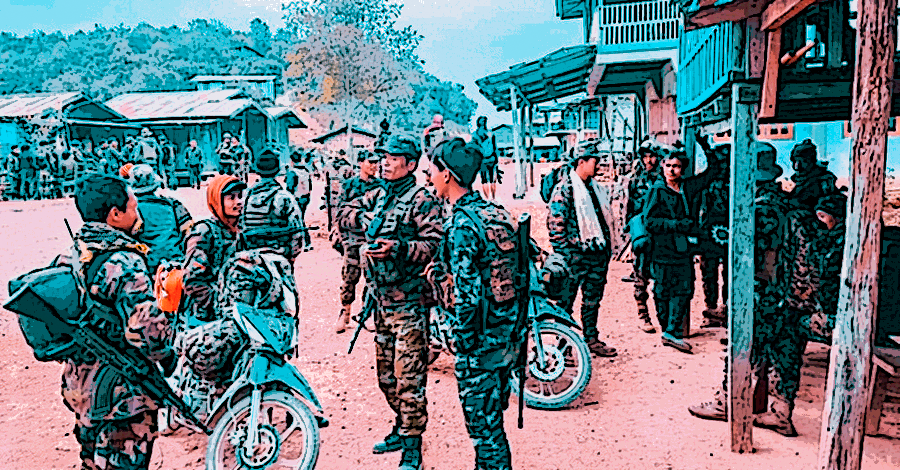Myanmar Spring Chronicle – February 4 by MoeMaKa Media:
Urban Warfare and the Toll on Cities

The Institute of Chin Affairs, based in the United States, reported a significant shift in control over Chin State, with the Chinland Defense Forces now holding sway over 75 percent of the state’s territory. The capture of multiple towns, including those in Thantlang, Falam, Matupi, and Mindat townships, has underscored the evolving dynamics in the region. Notably, Paletwa Town fell under the control of the Arakan Army (AA).
Out of the nine townships in Chin State, seven towns across five townships have fallen into the hands of various armed groups.
Chin State, characterized by challenging terrain and limited agricultural land, has historically been less developed. The Military Council, in its strategic priorities, seems to have chosen to focus on regions with greater resource production and strategic importance rather than exerting military force to control Chin State.
The concerns now shift to the urban areas, with the imperative being the removal of military council battalions and administrations from the cities. Local residents have expressed apprehensions about potential harm to the urban areas, emphasizing the need for a strategy that minimizes damage to towns and villages.
Residents of cities like Kanpetlet have voiced their concerns, highlighting the risk of houses being destroyed, the elderly losing their lives, and an exodus of frightened residents. The military council’s strategy to defend cities has often resulted in the use of heavy weapons, causing damage to residential houses, churches, schools, and monasteries.
The military’s continuous firing with heavy weapons during city capture battles has raised questions about the consequences and the potential for minimizing losses with a swift strategy. General Tun Myat Naing, in an interview with the BBC, revealed that while there are calls for a relentless fight against the military council, concerns about the destruction of cities persist among the public.
Khun Bedu, the leader of the KNDF, emphasized the inevitability of the attack on Loikaw town, given the circumstances. In Karenni State, where military council troops are primarily deployed in cities and rural areas, the revolutionary forces control some cities, such as Mese. Loikaw, being the gateway to Karenni State and a symbolic administrative center for the military council, became a focal point for attack.
The military council’s response to city attacks often involves heavy weapons, and in some instances, communities are not allowed to leave, effectively being used as human shields.
The evolving situation prompts a critical review for revolutionary forces, determining the appropriate level of engagement in city-occupation battles and devising strategies to minimize damage to towns and villages while advancing territorial control.
